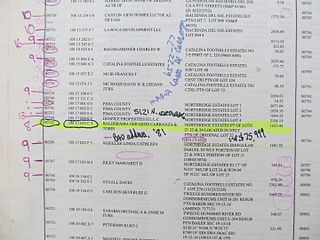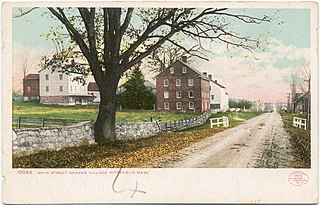
Ohio county government is the structure of official managerial and legal bodies of the counties of Ohio, USA. It is marked by a loose organization and a diffusion of power, the basic framework not having been changed since the nineteenth century. The Ohio Constitution allows counties to set up a charter government as many cities and villages do, but only Summit and Cuyahoga counties have done so. Counties operating under a constitutional government do not possess home rule powers and can do only what has been expressly authorized by the Ohio General Assembly. However, Article X of the Ohio Constitution gives county government benefits similar to those conferred on cities and villages under the home rule amendments of 1912.

Most U.S. states and territories have at least two tiers of local government: counties and municipalities. Louisiana uses the term parish and Alaska uses the term borough for what the U.S. Census Bureau terms county equivalents in those states. Civil townships or towns are used as subdivisions of a county in 20 states, mostly in the Northeast and Midwest.
The homestead exemption is a legal regime to protect the value of the homes of residents from property taxes, creditors, and circumstances that arise from the death of the homeowner's spouse.

The government of Florida is established and operated according to the Constitution of Florida and is composed of three branches of government: the executive branch consisting of the governor of Florida and the other elected and appointed constitutional officers; the legislative branch, the Florida Legislature, consisting of the Senate and House; and the judicial branch consisting of the Supreme Court of Florida and lower courts. The state also allows direct participation of the electorate by initiative, referendum, and ratification.
The homestead exemption in Florida may refer to three different types of homestead exemptions under Florida law:
- exemption from forced sale before and at death per Art. X, Section 4(a)-(b) of the Florida Constitution;
- restrictions on devise and alienation, Art. X, Section 4(c) of the Florida Constitution;
- and exemption from taxation per Art. VII, Section 6 of the Florida Constitution.
Massachusetts shares with the five other New England states a governmental structure known as the New England town. Only the southeastern third of the state has functioning county governments; in western, central, and northeastern Massachusetts, traditional county-level government was eliminated in the late 1990s. Generally speaking, there are four kinds of public school districts in Massachusetts: local schools, regional schools, vocational/technical schools, and charter schools.

A local ordinance is a law issued by a local government such as a municipality, county, parish, prefecture, or the like.
Connecticut shares with the five other New England states a governmental structure known as the New England town. From 1666 to 1960, Connecticut had a system of county governments, which each had limited powers given to it by the General Assembly. They were abolished by Public Act 152 in 1960. Connecticut also had a system of sheriffs' offices until October 2000, when those were also abolished.

The government of Miami-Dade County is defined and authorized under the Constitution of Florida, Florida law, and the Home Rule Charter of Miami-Dade County.

A tax sale is the forced sale of property by a governmental entity for unpaid taxes by the property's owner.

In the United States, the meaning of village varies by geographic area and legal jurisdiction. In many areas, "village" is a term, sometimes informal, for a type of administrative division at the local government level. Since the Tenth Amendment to the United States Constitution prohibits the federal government from legislating on local government, the states are free to have political subdivisions called "villages" or not to and to define the word in many ways. Typically, a village is a type of municipality, although it can also be a special district or an unincorporated area. It may or may not be recognized for governmental purposes.

In the United States, a sheriff is the chief of law enforcement of a county. Sheriffs are usually either elected by the populace or appointed by an elected body.
Local government in Pennsylvania is government below the state level in Pennsylvania. There are six types of local governments listed in the Pennsylvania Constitution: county, township, borough, town, city, and school district. All of Pennsylvania is included in one of the state's 67 counties, which are in total subdivided into 2,560 municipalities. There are currently no independent cities or unincorporated territories within Pennsylvania. There is only one incorporated town in Pennsylvania, Bloomsburg.

Most local governments in the United States impose a property tax, also known as a millage rate, as a principal source of revenue. This tax may be imposed on real estate or personal property. The tax is nearly always computed as the fair market value of the property, multiplied by an assessment ratio, multiplied by a tax rate, and is generally an obligation of the owner of the property. Values are determined by local officials, and may be disputed by property owners. For the taxing authority, one advantage of the property tax over the sales tax or income tax is that the revenue always equals the tax levy, unlike the other types of taxes. The property tax typically produces the required revenue for municipalities' tax levies. One disadvantage to the taxpayer is that the tax liability is fixed, while the taxpayer's income is not.

California has an extensive system of local government that manages public functions throughout the state. Like most states, California is divided into counties, of which there are 58 covering the entire state. Most urbanized areas are incorporated as cities, though not all of California is within the boundaries of a city. School districts, which are independent of cities and counties, handle public education. Many other functions, especially in unincorporated areas, are handled by special districts, which include municipal utility districts, transit districts, health care districts, vector control districts, and geologic hazard abatement districts.

The Government of San Joaquin County is defined and authorized under the California Constitution and law as a general law county. Much of the Government of California is in practice the responsibility of county governments, such as the Government of San Joaquin County. The County government provides countywide services such as elections and voter registration, law enforcement, jails, vital records, property records, tax collection, public health, and social services. In addition the County serves as the local government for all unincorporated areas.
The Government of Solano County is defined and authorized under the California Constitution and law as a general law county. Much of the Government of California is in practice the responsibility of county governments, such as the Government of Solano County. The County government provides countywide services such as elections and voter registration, law enforcement, jails, vital records, property records, tax collection, public health, and social services. In addition the County serves as the local government for all unincorporated areas.
The Government of Fresno County is defined and authorized under the California Constitution, law, and the Charter of the County of Fresno. Much of the Government of California is in practice the responsibility of county governments, such as the Government of Fresno County. The County government provides countywide services such as elections and voter registration, law enforcement, jails, vital records, property records, tax collection, public health, and social services. In addition the County serves as the local government for all unincorporated areas.

The Government of Stanislaus County is defined and authorized under the California Constitution and law as a general law county. Much of the Government of California is in practice the responsibility of county governments, such as the Government of Stanislaus County. The County government provides countywide services such as elections and voter registration, law enforcement, jails, vital records, property records, tax collection, public health, and social services. In addition the County serves as the local government for all unincorporated areas.
The administrative divisions of Ohio are counties, municipalities, townships, special districts, and school districts.












